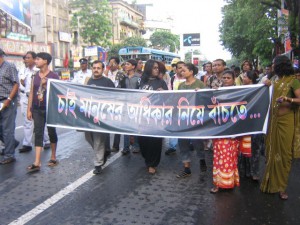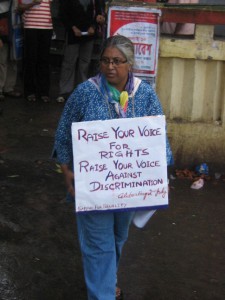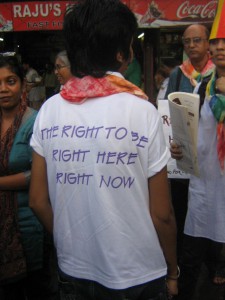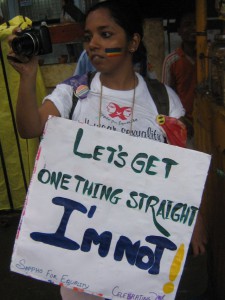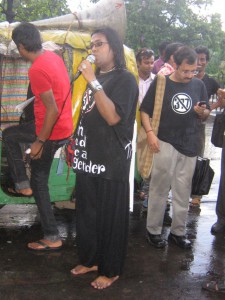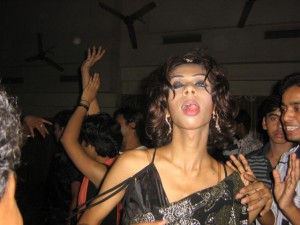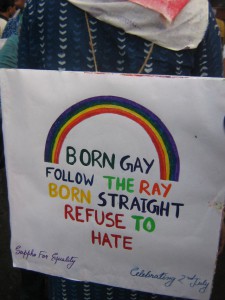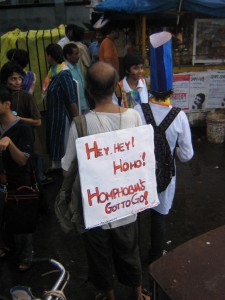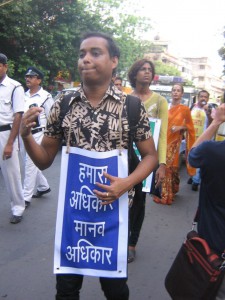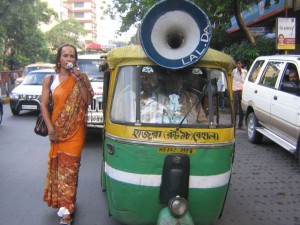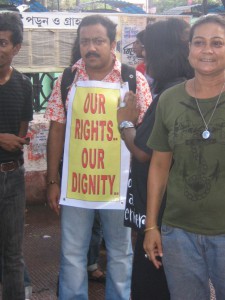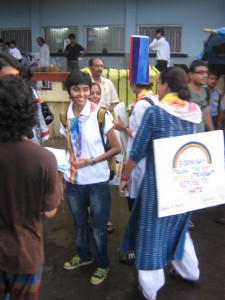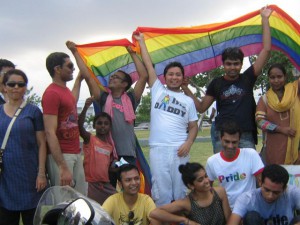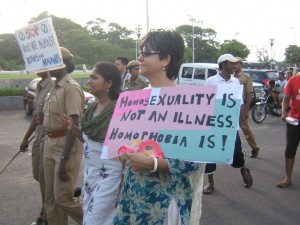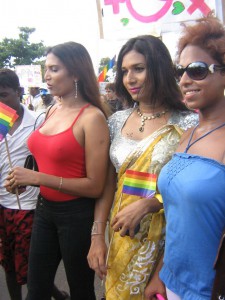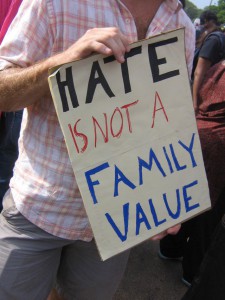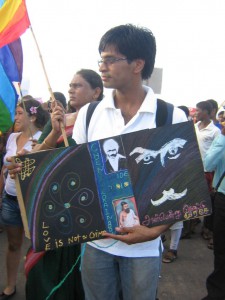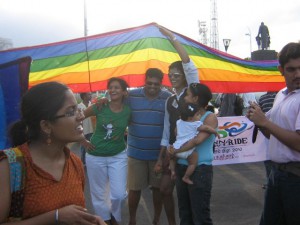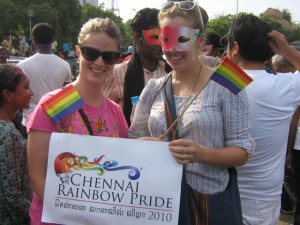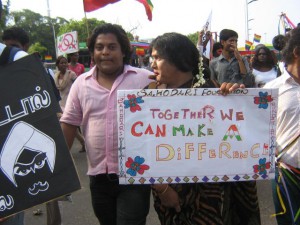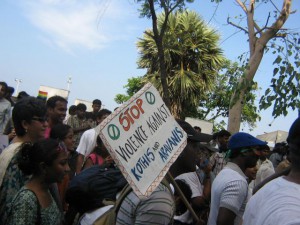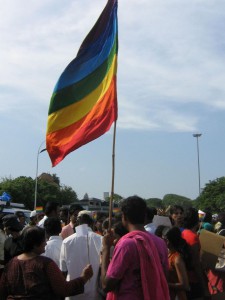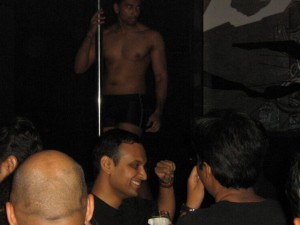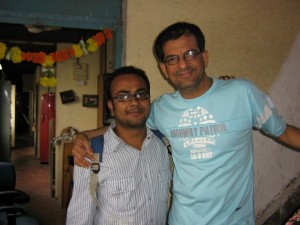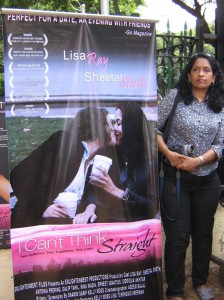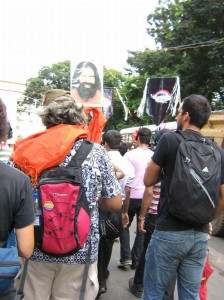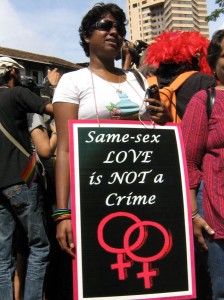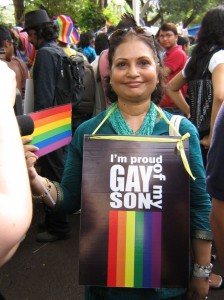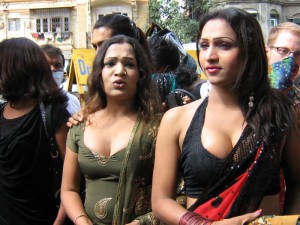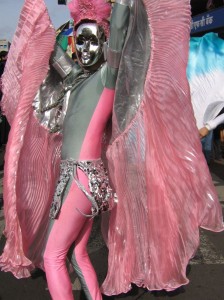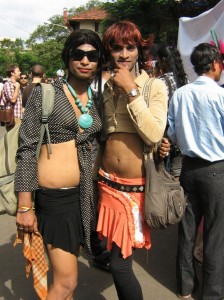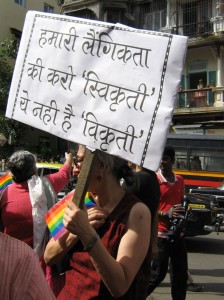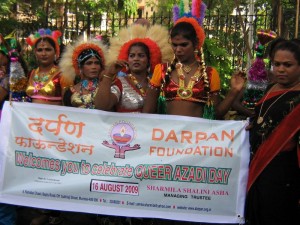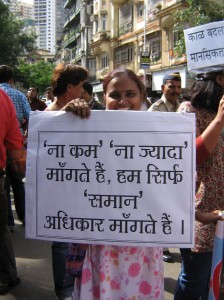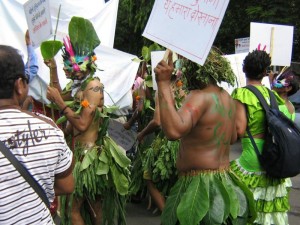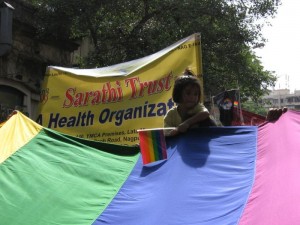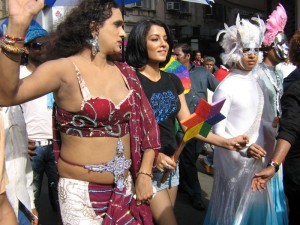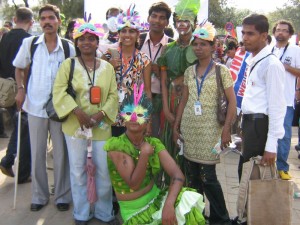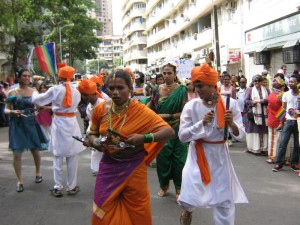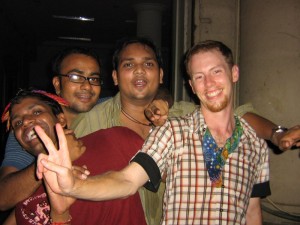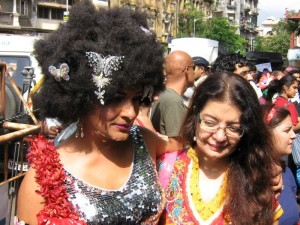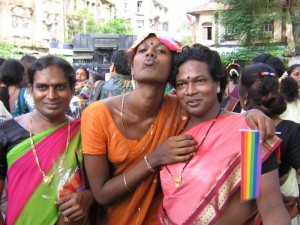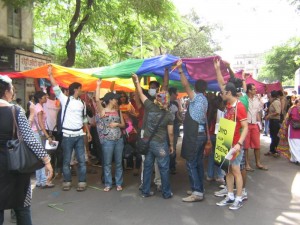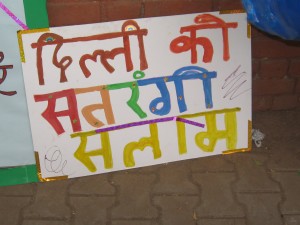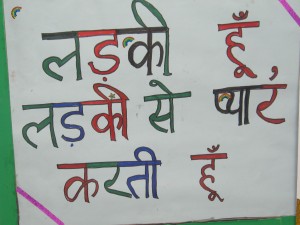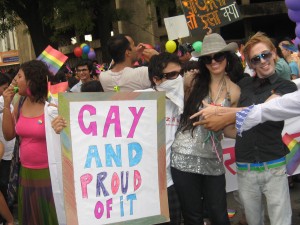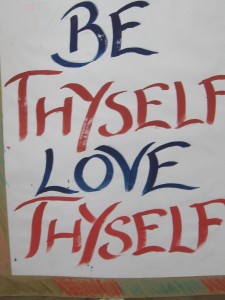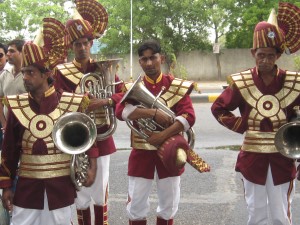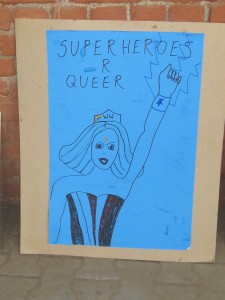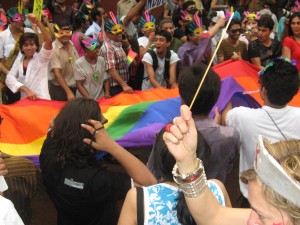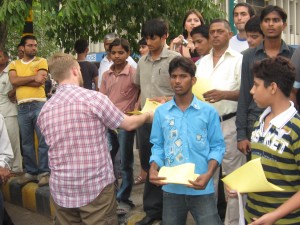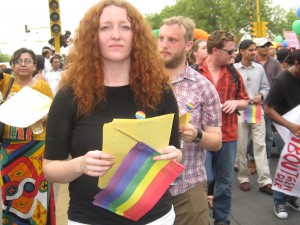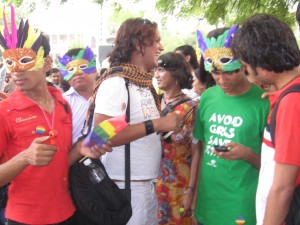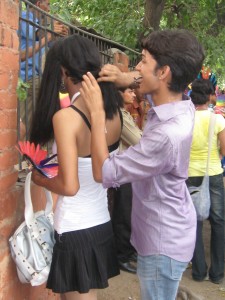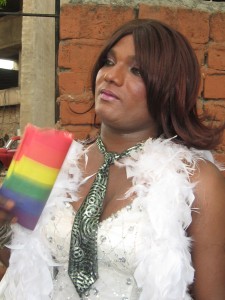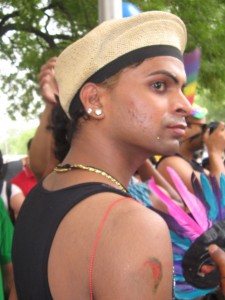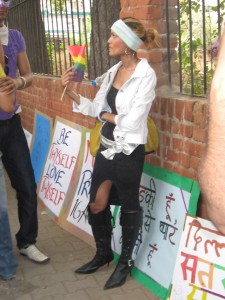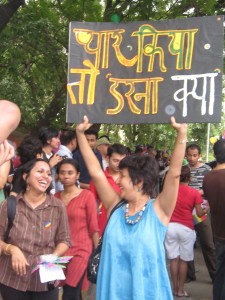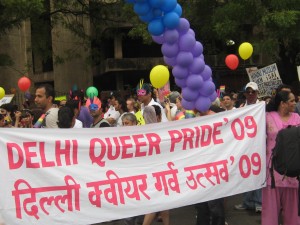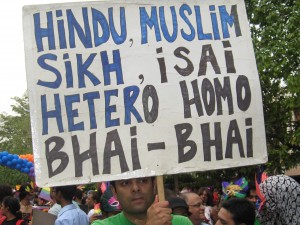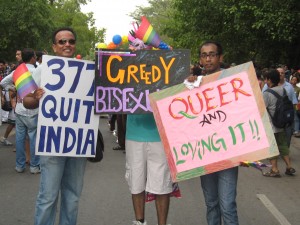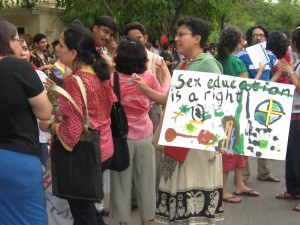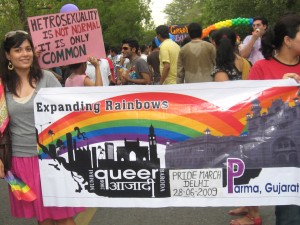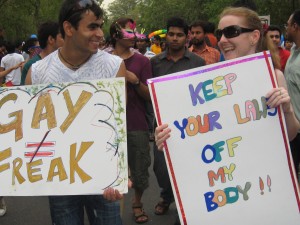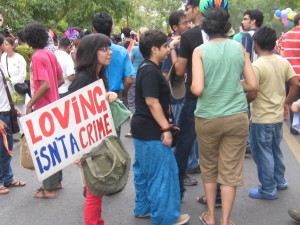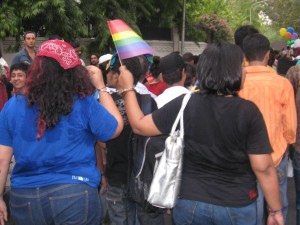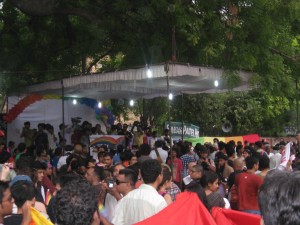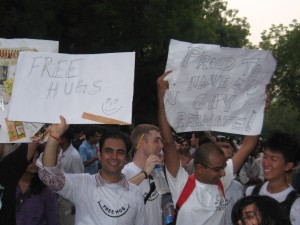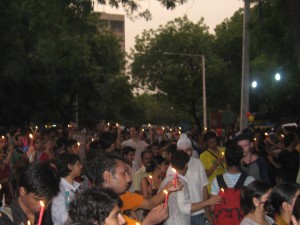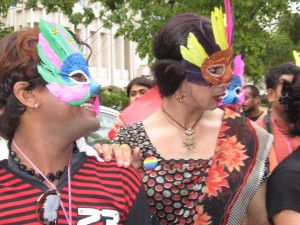Many of the posts on this blog are syndicated from posts on the blog at GroovyGanges.org. That blog is the personal blog of Nandan Upadhyay, one of the founders of Sanjeevani Booti in 2007.
Osho ashram Pune
I visited Pune with friends for a few hours but these few hours seemed enough to get a taste of the city. It was just like any other metropolitan Indian city but there was definitely something special about Pune. We visited an area where all the IT companies were situated and this visit was just awesome. I saw offices of all the big IT names I had ever heard of. Infosys, Wipro, TCS, Infosys, Wipro, TCS… all these huge IT companies had their offices there. The architecture also seemed completely unusual but very impressive. The buildings had strange shape but they were looking very nice. I am sure the best IT techniques were used to design those buildings.
There was construction going on everywhere in the city. Big glass window buildings were everywhere with a lot of traffic on the road which was just like any other big Indian city. After visiting the IT park we decided to visit Osho Ashram in Pune. This ashram was just hilarious. When I think about an Ashram, I think about a very simple place where a lot of religious practices are going on but this ashram was just like a five star hotel with all the rich people from all over the world living in it. There was a reception counter at the entrance where I saw one Indian and one foreigner talking in English, first shock.
When we went to him asking what was going on there and how could we go in he gave us a pamphlet explain the rules of entering in the ashram. There was an entry fee of Rs. 850 just to visit the ashram for a day. They needed everyone to have HIV test done before they come and if visitors don’t have HIV test done they get tested at the ashram before entering in. I just could not imagine why somebody would need HIV test in order to get in an ashram but then I learnt that Osho was really serious about HIV and AIDS and his approach to sex was also different.
But still I did not understand what kind of approach makes you get HIV testing done before meeting someone and then a few locals told me that it is very easy to find people to have sex with inside the ashram hence it is necessary to have HIV testing done. If this is the case then it was very smart decision to have people HIV testing done before getting in the ashram but it was really unusual. Anyways, this five start ashram offers rooms for Rs. 5000 per day. I am 100% sure that anyone can find a really luxury nice hotel room for this much of money in India but again five star ashram deserves five star money. I enjoyed talking and learning about the ashram. Hope to have enough money to stay at the ashram someday and experience a five star ashram:)
Kolkata Gay Pride 2010
I got to attend Kolkata Gay Pride as well which was on the 2nd of July. I arrived in Kolkata on the 1st of July after attending the Chennai pride and spending a few days in Bangalore. My friend Sourendra from Mumbai had introduced me to Mr. Rajshrei Chakrobarty who was Secretary of Dum Dum Society and one of the organizers of Kolkata Gay Pride. I knew that Kolkata was the first city in India to start gay prides and I was expecting it to be the biggest one in India this year as well but when I arrived at the parade venue I was shocked to see that there were hardly 50 people in the parade.
Mr. Chakrobarty told me about the reason of few people before I asked him about it. He said that most of the organizations working on gay rights in Kolkata boycotted the parade because of some internal politics hence they could not make the parade as big as it used to be in the past. He said that Dum Dum Society and one other organization called Anandam were the only two organizations that organized the pride this year. I was surprised to hear that most of the organizations boycotted the parade but at the same time I was happy also that at least someone organized it.
The parade started from Jatin Das Park near Hajra crossing and ended at the Academy of Fine Arts. The parade started with only 40-50 participants but it was really interesting. I have been to all the big prides taking place in India within past one year and Kolkata one was the most liberal parade I had ever seen in India. I noticed that nobody was wearing the masks. They had an auto rickshaw with loudspeakers and the participants of the parade were singing songs of human rights, equal rights and gender equality. They were passing out pamphlets which had writing about LGBT rights.
It was raining most of the time during the parade but it could not stop people from joining the parade. The parade started with 40-50 people and ended with at least 100 or 120 people. A lot of people joined at the Academy of Fine Arts where the parade ended. In fact, the end was the most interesting part of the parade for me. At the academy a lot of young lesbian couples joined the parade. I had never seen that many lesbians before in any of the parades whether Mumbai, Delhi or Chennai and very interesting thing was that these girls were young.
They being young surprised me the most because in India lesbians coming in public and very rare and whenever I see any lesbian I always find them over 35, living either alone or with their partner and always have no connection with the family but these young girls were really young and I don’t think they were living alone or had no connection with their family. They were so open and they knew that their parents were going to know about their sexuality if they participated in the parade but they still did it which meant their parents either knew about it or these girls knew that their parents would not mind knowing that their daughter was a lesbian. I liked it.
The parade ended with speeches from Mr. Ranjeet Sinha, Mr. Rajarshi Chakrobarty and a few other social activists. After the parade ended, I went with Mr. Chakrobarty to attend a cultural dance and performance program organized by an organization called Saathi. This program was basically a platform for the LGBT community to show their talent and have fun. I spent about an hour at the program and then headed back to my hotel for overnight. Dum Dum Society had organized a cultural program about 2 hours bus ride away from Kolkata two days after the parade.
This program was really something and I could easily see how Dum Dum Society was working honestly with the LGBT community and how they had strengthened the people belonging to the community. The program was just awesome. They had several dance performances, some of them based on Bollywood songs and some on traditional Kolkata songs, they had fashion shows where all the clothes were designed by the people belonging to LGBT community and I was shocked to see the quality of the program. It was really awesome and I enjoyed it a lot. The chairman of municipality was the chief guest of this program.
There were more people in this program than the parade. I think there were at least 500 people at this program. I was able to interview a few people including Mr. Rajshree Chakrobarty, Mr. Ranjeet Sinha and a few other people from LGBT community and all of those interviews were really interesting. Mr. Chakrobarty told me about the history of gay activism in Kolkata. He said that it first started in Kolkata in the year 1989 which clearly shows that they were one of the few who started gay activism in India and at present there are about six or seven organizations working on LGBT rights in Kolkata.
I asked about the condition of the LGBT community in Kolkata and he said that the condition of the LGBT community living in Kolkata city area is in much better condition than the LGBT community living in the other districts or suburbs of Kolkata because of the influence of media and availability of organizations working in the city. He told me that the condition of the LGBT community is much better in Mumbai and Delhi when compared with Kolkata because Mumbai had started working on this issue way before Kolkata and since Kolkata is the poorest metropolitan city in India, the life of LGBT community is not easy here.
Mr. Chakrobarty told me something really interesting that transgenders are more discriminated against when compared with gay community because their sexuality is more visible but when we talk only about discrimination then yes, the whole LGBT community is discriminated against on various levels. I asked the same question which I ask to other people whom I interview about many people thinking that homosexuality is a disease or a fashion and it being possible to change it by getting people married or making them practice yoga (Baba Ramdev Says). His answer was like the others in that he said it is not possible to change somebody’s sexuality by getting them married.
He said that many people get married with a woman under family or social pressure but they are not happy and they practice sex with a same sex person even after marriage. I know several people who do this and I definitely believe that it just not possible at all to change somebody’s sexuality by getting them married or teaching them yoga. I asked him about the existence of the LGBT community in Hindu culture and religion and he told me several stories which proves that the LGBT community has always been in existence. I also believe the same because I have read several Hindu sacred books and have visited temples where same sex behavior sculptures are shown.
He told me something really intersting that I did not know before. He told me when Hanuman went to Sri Lanka to search for Sita, he saw that Ravan had kept several women but he was not able to give time to all of them hence these women had started making sexual relationships with each other which clearly shows that there were lesbians during Rama’s time also. I asked him about the revocation of section 377 and he told me that homosexuality was accepted in Hindu society and temples of Kamasutra and several other books clearly proves it but British made it illegal and this judgment of the High Court of Delhi was a right judgment and most probably it will help changing the society in the future.
It was really informative talking with him. He was a real and honest social worker working on LGBT rights in Kolkata. After Mr. Chakrobarty, I got to meet Mr. Ranjeet Sinha who was a transgender himself and was working with transgenders in Kolkata and nearby districts. He also told me about the problemswhich the transgender community was facing in Kolkata. He told me that there are reservations on the basis of caste and religion but no reservation for transgenders. He demanded for a separate toilet system at public toilets because when he goes to the male toilet, people make fun of him and if he goes to the female toilets then women are scared.
Mr. Sinha told me a story of his one friend, who was a transgender Hijra himself and was a well known social activist in West Bengal and was suffering from AIDS. He had to go to the hospital once and the doctors forcibly took off his clothes, made him wear men’s clothes and only then they admitted him in the hospital. Mr. Sinha demanded that their identity should also be recognized on official documents such as passport and voter ID card. He said that all the NGOs are focusing only and only HIV and AIDS but they must do something on other issues also related with LGBT community. He mentioned all the South Indian states, especially Chennai, as being especially progressive working on transgenders issues.
He also said that it is not possible to change someone’s sexual identity and if one tries to do so then the result is always horrible. Kolkata taught me so many new things. I was especially thrilled to see the work of Dum Dum Society. It was really a nice experience meeting with people like Mr. Chakrobarty and Mr. Sinha and so many other people who helped me in Kolkata and educated me about their issues and their work. I hope to go their next year as well and will hope that all the organizations that had boycotted the parade this year would join the parade again by ending the internal politics and making Kolkata a city of equal rights for everyone.
Please click here to see more pictures:
Chennai Gay Pride 2010
It was Chennai gay pride yesterday on the 27th of June and I came to attend the festival. This festival was not as big as I was expecting it to be but big enough to bring attention of local people and make them aware about something called “gay”. I was expecting for at least 1000-2000 people but it had hardly 400-500 people. The parade started near Labor Statue at Marina beach at 5 PM and lasted for over an hour. The parade was organized with the help of many organizations working in Chennai for LGBT rights but most probably Shakit Center was the biggest name.
The people at the parade seemed to he really happy and energetic, especially people from LGBT community. Delhi and Mumbai pride had music and many people were dancing whereas Chennai parade did not have any music but still people were singing something in Tamil- which I did not understand for sure, jumping, laughing and dancing. They were hugging each other and seemed so happy. There were all kinds of people: gay, lesbians and hijras. But I noticed one thing that Chennai parade had fewer lesbian couples when compared with Delhi and Mumabi parade and this parade seemed less open than Mumbai and Delhi one.
Participants of Delhi and Mumbai pride were much open in expressing their relations with their partners like they were holding hands with each other or just walking together which showed that they were a couple but Chennai Pride did not have anything like this. The participants of Chennai pride were more like did not want people to know about their partner. I think since South India is more Hindu part and people are seen as more religious, maybe this is the reason why gays of Chennai want to hide their relations more than Delhi and Mumbai people. Anyways, I was happy that they at least organized such event.
I was talking with one of the organizers of the parade and he said that last year the parade was bigger than this year but the important thing was that this year more community members participated whereas last year there were more outside supporters which increased the number of people in the parade. I had also noticed the same that Chennai parade did not have many outside supporters whereas Delhi and Mumbai had big number of supporters like students and families as well. The Marina beach area is a big picnic spot for Chennai people and since the parade was on Sunday, there were thousands of local people who watched the parade.
It was good the parade took place at such place where locals got the see the parade. I also distributed pamphlets to the people around and masks to the people who seemed interested in joining the parade but seemed confused. The usage of masks was on a bigger level here in Chennai than Mumbai and Delhi. I saw a few people wearing two-three masks at the same time to cover their whole face. I talked with a few participants of the parade who were wearing the masks and they said that Chennai is still so conservative about gay culture hence they did not want others to know that they were also at the parade.
Their wording was “if others see me participating in the parade, they would think that I also have the same taste.” I know that gays are made of fun of all over the world and many people hate them just because of their sexuality but I expect the big cities to have a better view about gay culture but Chennai did not seem to have this better view for gays. I asked Mr. Annirdudhan Vasudevanthe, one of the organizers of parade, about the change in conditions after Delhi High Court decision of making gay relations legal and he said that there is some change for sure but not really much or not something that really changed the society.
Annirudhan was happy to say that at least people have started talking about it and now at least they know that there is something called the “LGBT” community and they have also their rights. He said that the condition is not going to change really soon and that it will take sometime but hopefully someday they will also have equal rights in the community. He said that the LGBT community is discriminated against everywhere in the country and they demand protection and medical health care from the government of the India. He said that many people think that homosexuality is a disease which can be cured by giving some special therapy which is just not true at all.
Annirudhan said that being homosexual is neither a fashion nor abnormal at all; it is a natural process and anyone could be born with such human nature. I also believe the same. He talked about the Aligarh Muslim University’s professor Srinivas Siras who was found having sex with a same-sex person and was suspended only because of this reason. Prof. Siras later committed suicide because the university administration had funded a sting operation to video Prof. Siras having sex with a same sex partner.
Mr. Annirudhan said that even though gay relations have been legalized in India, Prof. Siras was still punished. I was talking about the same matter with one of the participants and he said that said that the government should ask the university about how they dared to record Prof. Siras personal life without his consent. Recording somebody’s personal life without without their consent is a punishable offense under Indian law because it comes under the right of privacy act and government police should register a complaint against the university administration and punish them, not Prof. Siras.
I also think that it is true that nobody has rights to do such thing. There are so many beautiful laws in India but implementation of these laws, how affective are they??? So many problems with gay community in India. I am happy that I came to attend the pride and I would like to come here again and hope that the Chennai gay community will have fewer problems when I come here next year and there will be more support from outsiders as well. One thing is very sure that the gay community will not be able to get equal rights in the society until we straight people support them so please come together to help our LGBT community and make a better world.
There was a party also the night before the parade whereas Delhi and Mumbai had a party on the parade night. This party was organized at a four-star boutique hotel called Le Waterina situated at Kotivakkam Beach, Trivanmauyr, Chennai. This was the most expensive party I had ever been to. There was no entry fee in Delhi’s party, Mumbai party was Rs. 500 but drinks were not so expensive inside whereas the entry fee for Chennai party was also Rs. 500 and the drinks were really expensive. Anyways, I got in and met a few locals who had come to attend the party.
I met a guy who did not even know about the parade taking place the next day but he knew about this party. I asked him how did he come know to about the party and he told me that he got an SMS on his mobile about the party. I asked him if he would come to the parade as well and he was like why would I come to the parade. He seemed hesitant to talk about the parade and the party but I saw him the next day in the parade. I think he was also a gay but did not want to talk about it and I expect such behavior from the LGBT community in India because I know that the LGBT community always hides their sexual identity because there is so much discrimination against them and they do not have equal rights.
This party showed me something new, something that I had not seen before: a male go-go dancer. I was thrilled to see it. The party had a famous DJ from Delhi who was playing western music all the time and then he announced that they had a dashing boy from Bangalore who was going to dance tonight. This go-go dancer appeared in shorts and a T-shirt but later he took off his T-shirt and was wearing really short shorts. He seemed like a popular dancer because many people knew his name. I think he was in the party for more than an hour and I think his presence boosted-up the party. People went crazy to see him. I had seen such only on TVs before and it was so fun to attend the party.
Please click here to see more pictures:
Mumbai Gay Pride 2009
I attended Mumbai gay pride on the 16th of August. It is celebrated on this particular date because the gay community organizing this event says that India got freedom on the 15th of August but gay community never got freedom so they decided to celebrate their freedom one day after the independence day of India. The event was basically organized by an NGO called Humsafar that works with the gay community in Mumbai. I had already contacted people at Humsafar about my project and they were very welcoming. I was in Gwalior doing my training but I took a leave of 4 days and flew to Mumbai. I arrived in Mumbai on the night of the 14th.
I had attended this year’s Delhi Pride on the 26th of June and I really missed a video camera but I had arranged a video camera to record Mumbai Gay Pride. I had asked my friend Yogesh, who works in Bollywood, to arrange a camera for me and he provided me everything I wanted. I went to Humsafar on the 16th with a camera person and a friend from the US named Ryan. We met in Benares and I invited him to attend Mumbai Pride with me. I wanted to cover the preparation for the parade, interview a few people at Humsafar, interview a few people at the parade, participate in it, enjoy the party and make some new contacts to work together in the future.
I was supposed to start interviews at Humsafar at 12 o’clock but when I reached there I found that there were already a few media people interviewing Humsafar guys but they arranged a guy to show me their office. The office was amazing; they had an HIV and AIDS testing center. I had already been to a few NGOs but I had never seen any NGO having an HIV and AIDS testing center before, so it was really impressive. The Humsafar guy took me to the second floor of the office where they were preparing for the next day’s parade. There were about 20 guys practicing dance. A few of them hijras also. They had a guy to play Punjabi dhol and a big music system. I was surprised to see that they were practicing some traditional dance of hijra culture.
I just spent sometime watching the people preparing for the parade; they were really working hard and seemed so excited for the parade. All of the performers were either homosexuals or hijras who come to Humsafar if they need any help. The guy showing us the office told me that the CEO of Humsafar, Mr. Vivek Raj Anand, had just arrived at office and he asked me if I would like to interview him and I really felt lucky that I got to interview him. He was really amazing, very well educated, had very good knowledge of the issue and he really knew what he was talking about. He did not have much time but I got 15 minutes and I think it was good enough to start.
I believe that the gay community has always been in existence in India but a lot of people see it as a disease which came from the West so whenever I interview someone about gay culture, I always ask them about the history of gay culture in India. I ask them to tell me about the presence of gay culture in Hindu religious books because I know that Indians do not want to compromise with the religion and once they know something is part of their religion and culture, they are always so welcoming to this idea. And I also wanted to do the same thing, because I believe that if people know that gay culture has always been part of our culture, the it would be easy to make them understand the issue.
My idea behind interviewing all these people was to interview them and put the interviews online. I had intentionally done the interviews in Hindi so that people living in India could understand them. The interviewee told me a few stories that came from Ramayana and other Hindu religious books which showed the presence of gay culture even during Ram’s time. He talked about what kind of problems he had to face in society, how people discriminated against him, how he came out of it and what is the hope for the future. It was really interesting to learn the history of gay culture in India. He had very good knowledge about history of gay culture in India, especially in Hinduism.
Mr. Anand asked me to work with the MSM community in Benares. He said that he could give me a project or he could get me one through the UP government which was something I really wanted to do. We talked about working together in Benares but he said that Humsafar doesn’t work out of Mumbai and Thane district. He said that he would help me with anything I wanted- funding, training or any other thing but they will not go out of Mumbai and Thane district officially to work. I think I will not be able to work with him soon as my NGO is not registered under section 12 A and any NGO can not get this registration until they are at least 1 year old. But now Sanjeevani Booti has completed its 1 year and now I can apply for this registration.
Mr. Anand told me during his interview that he wants to thank Baba Ramdev on behalf of the whole gay community because Baba is the one who challenged the judgment of the high court of Delhi in the Supereme Court of India to revoke of section 377. He said that the Supereme Court of India would also give the judgment in favor of the gay community and this way they would have equal rights very soon. He said that there was no one who bothered coming against the judgment of Delhi high court but it was Ramdev Baba who brought this matter to the the Supereme Court of India so thanks to him. I would also like to thank Baba Ramdev for making the process faster.
I interviewed the Mr. Anand, the manager of Humsafar, one bisexual , two hijras, and few gays. It was really a nice experience interviewing them and listening to them and their stories. All of them were a little different from each other but they had the same issues. I think everybody whom I interviewed at Humsafar talked about discrimination the most. The manager of Humsafar told me that he wanted to get his passport with his gender showing either a girl or a hijra or a transgender but the government officials do not want to do it. Government officials tell him that they just do not know what a transgender is.
He said that he has gotten his name changed officially to a female’s name and now preparing for a gender change operation but still the government doesn’t want to issue him a passport showing his gender as a female or as a hijra or as a transgender. He has sued the government for this reason. He was saying that gender change operation facility is not very good in India and he wants to go abroad to get it done but since the government is not issuing his passport he is unable to do it. He said that he has decided that he will take his passport only if they issue the passport with his gender showing as a female or a hijra or a transgender.
He told me that he only looks like a man from his body but he is not a man, he is a woman. I interviewed one Muslim guy also who was with a group of two hijras. This interview was also very interesting. It was the first time when I interviewed any Muslim gay. He said that his family will never allow him to get married with a man, which is what he wanted, so he has decided to either escape from the home or just stay unmarried for his whole life. The hijras were also fantastic. They told me a lot of things about hijras that I did not know before.
I never understood the difference between people’s use of the word “hijra” and a “gay” and when I asked him about it they said that educated people use the word gay and uneducated use the word hijra, that’s all. They also talked about the issues hijra community is facing in India and it was exactly as the issues of other people whom I had interviewed at Humsafar. Hijras told me something really interesting that there are two different kinds of hijras.
One of them is more respected in amongst hijras. They get married to the hijra goddess when they are so young. They have to wear a thread all the time which represents their marriage with their goddess. They can live with their family as well which doesn’t happen with the other kind of hijras. The hijras who bless and dance at the weddings are different than them; it was really interesting, and I need to do some research about it. I interviewed a bisexual who was in fact a male sex worker. It was the first time when I had ever met any male sex worker and it was amazing talking to him. He also had few issues likes discrimination because he was a bisexual guy.
He said that when he was 14 years old and would go out with his friends and his friends used to look at the girls but he never felt like he had any interest in girls. He said that when he turned a bit older, he met Mr. Anand who brought him to Humsafar and that was the time when he came to know why he did not have any interest in girls. He joined Humsafar and now he works there as a program manager. He said that he used to distribute condoms to the male sex workers at railway stations and once he gave a pack of condoms to a policeman thinking that this policeman was a male sex worker. The policeman slapped him and kicked him out of the railway station; it was a funny story.
The first day was all about watching people preparing for the event and interviewing a few people at Humsafar. After completing the interviews on the first day, we came out of the Humsafar office and we were standing on the road waiting for an auto-rickshaw and at the same time a 25-26 year old guy named Sourendra came to me and started talking about what we were doing in Humsafar office. I had already seen him in the office so I also didn’t hesitate telling him about my project. He asked me where I was from, what I was doing at Humsafar etc. and then he asked me about my project and said that he was also gay and visits Humsafar on regular basis.
He seemed to be an educated and interesting guy. He asked me where I was going and after my answer he said that he was also going to the same direction. He said that he also wanted to come with me. I asked him if he would like to be interviewed and he said- why not. We went together to my friend’s place and my friend drove us to somewhere where there was a litti-chokha (very famous Bihari food) party. We all went together and I interviewed him over the dinner at 1 o’clock night time.
Actually I regretted that I took him to that party because the guys over there at the party got too much interested in him after hearing that he was a gay. They would all come, look at him and laugh. I was really not comfortable there and I told my friend to change the place but since it was already 1 o’clock night time, we just decided to continue the interview at same party place. Sourendra was such an open and energetic and nice person. He talked about a lot of things that usually people do not want to talk about.
He talked about his sex practices and this conversation was really interesting. He talked about discrimination in the society, family, friends and discrimination at his job. He used to work at a call center and everything was fine for him. After a few months the call center in-charge changed and a new guy came who seemed like did not like gays. Sourendra’s voice was was sweet, like a girl, but this new in-charge wanted him to speak with a heavy voice which was something unnatural for him. He said that he pretended to speak with a heavy voice but it did not work and his performance level decreased and finally he had to leave the job only because he could not speak with a heavy voice.
When I asked him about the existence of gays and hijras in our religion and history, he told me something really interesting. He told me about the existence of gays and hijras during Krishna’s time. He said that once Krishna also wanted to sleep with a man. It was something that I had never ever heard before. I know that Ramayana in North India is different than Ramayana in South India. They have some difference between them like Ramayana in North India says that Hanuman was a celebate and South Indian Ramayan says that Hauman had more than one wife. People living in the North do not eat fish because it is meat for them and people living in West Bengal eat fish because it is sea food for them.
Different people have different beliefs about the same thing and maybe the case here was also the same: the Mahabharta Sourendra had read was a little bit different from the one I have read, not an issue at all. I liked interviewing Sourendra. After completing the interview we dropped Sourendra at the railway station. I was so excited for the next day’s parade. I was supposed to meet my friend Bijay, who lives in Chennai, at the parade. He was also gay and was in Mumbai to attend the parade.
We met at the Church Gate and headed together to the parade. I had two other guys to help me with the camera and other things. Mumbai Gay Pride seemed different than Delhi Gay Pride. I think the organizers had tried to give a cultural look to the parade. There were folk dance and song performers from South India and they were performing local dance of South India. I met Laxmi also at the parade. The parade was a little bit delayed as other things in India and started around 12 o’clock. I think the number of people at Delhi Gay Pride and the Mumbai one was same, something around 3000 people.
A group of people was carrying a huge rainbow flag. Mumbai seemed more respectful to the flag than Delhi. People at the Delhi parade were so excited that they started jumping with the flag and tore it off only few minutes after the parade had started. I saw a guy with his four or five year old daughter at the parade. She was sitting on her father’s shoulders and was holding the flag. A few of my foreign friends tell me that although they support gay rights they do not like gay pride parades as they are so vulgar but in India situation was the completely different- very cultural, good enough even for a five year old girl.
People were dancing, jumping and laughing so it seemed like a very happy event. I was also enjoying it. An hour after the parade started, a Bollywood actress named Celina Jaitely joined the parade. She has been involved with gay rights issue for a long time in India. I saw many Bollywood and TV stars at the parade. I think she was in the parade for more than an hour. There were a few guys with Celina and they had dressed amazingly. I had never ever seen anything like that before. Laxmi, Celina and everyone else at the parade were dancing and enjoying themselves.
I saw two Muslim girls also at the parade who were wearing Burka. They joined the parade an hour before its end but they also seemed to be enjoying it. They were also dancing with other people but most of the time they wanted to be under the gay pride flag. I think they were concerned about their identity. Many people seemed concerned about their identity like at Delhi Pride. They had covered their faces with clothes or some kind of masks. I just don’t understand why people come to the gay parade if they are so concerned about their identity? Better stay at home and watch it on TV if they can not support it openly.
Mumbai Gay Pride seemed more organized in some ways. They had a van stuffed with banners, posters, masks, t-shirts etc. But masks and t-shirts were the most demanded items. I also tried to get one t-shirt but could not because they ran out within few minutes. They were distributing bottled water also to the participants. They had few volunteers with big bags who were collecting all the garbage, poly bags and bottles used during the parade. They said that they did not want to leave anything as garbage on the road, so this was a very clean festival which usually doesn’t happen in India.
I saw many people looking through their balconies and windows of their houses. I am sure they were surprised. Many people just joined the parade serendipitously. I saw a few people who were standing somewhere along the road doing their business, and then they saw the parade and joined it. One thing was very sure that Mumbai pride had more transgenders and hijras than at Delhi parade. There was a group of hijras which was right behind the flag performing some traditional hijra dance but this dance was not something I had seen hijras doing where I live. This hijra dance seemed more organized and calm, but usually hijra dance is very energetic and loud.
The parade was moving and moving and I was just filming the parade, talking with participants and enjoying it. Finally the parade stopped at August Kranti Marg sometime around 4 o’clock where a few social workers and NGO members delivered a speech about gay rights and their future planning. I also took a break and went to the beach nearby. I did some filming there also and interviewed a gay couple whom I had seen at the parade. One other thing that was in my mind was the repeal of Section 377 and I wanted to talk about it with the participants of the parade and members of Humsafar.
I asked about repeal of Section 377 to almost everyone I talked with and everybody was so happy about it. There was a guy who told me that these kind of laws are very important for bringing change in the society. Section 377 did not affect gay culture very much in India, even when it was effected, because you never know who is doing what inside their room but the worst thing that happened because of implementation of 377 was that it changed the thinking of people over time. But now since 377 is repealed, it will take some time, maybe 50 or 100 years, but someday gays will have equal rights in India. I also believed what he said.
After the parade ended, my friend Bijay took me to a very famous and old restaurant near August Kranti Marg. After having a few bottles of beer, we headed to Bijay’s hotel. I spent some time at Bijay’s hotel and then we headed to the party place. The party was organized at a disco but the Mumbai party was different from Delhi one. The Delhi party was organized by the organizers of the parade whereas the Mumbai party was organized by the participants. Delhi party’s entry was free but Mumbai party’s entry was Rs. 500 but they gave me three free drinks.
The Mumbai party had more people than the Delhi one and it had more lesbian couples also. It was my second time at any disco after the Delhi pride party and I was so excited for it. I don’t know why but I drank a lot of beer that night at party and got completely drunk. I saw many gay couples kissing and hugging each other which was not new to me but my friends were so surprised to see it the way I was surprised at the Delhi party. The party was supposed to last for the whole night but I had to leave early as my flight back to Bhopal was at 6 o’clock morning time.
Ryan helped me by packing up my stuff and bringing me to the airport. Somehow I arrived safely in Gwalior but that I will not forget that party night, it was crazy, I loved it. This trip was very successful because I got to meet with a lot of new people, interviewed them, learnt a lot and built some business relationship with Humsafar. They have invited me again to the parade next year and I will try to attend it. I still think about the people I talked with, their issues, their stories… it was so nice talking with them.They are fighting for a issue which should just not be an issue.
My friend Sanjay, who helped me with camera, told me what I was doing was crazy when I explained him my reason for being in Mumbai but after listening to the people I interviewed, his mind also changed. He also told me that gays should also have equal rights in our society. Actually my question stories of gay culture in Hindu religion worked for him. All of the interviewees told me few stories and it changed Sanjay’s mind. I know it very well that if somehow people can come to know about the existence of gays in Hindu religion, then there will be less problem for gays to get acceptance in Hindu society.
I think the basic reason behind the discrimination against gays in India is the communication gap, especially about sex practices, between straights and gays and 150 years of section 377. Section 377 changed our society a lot; it changed the mind overtime. When I look at Hindu religious books and history I find that gay sex practices have always been part of Hindu culture. It was not any issue at all and we were the most liberal society on the planet but the British changed everything in India. Well, we are getting rid of the poverty given by them slowly and I hope to get rid of this crazy system also.
VIDEOS ARE COMING SOON
Guide training program – week 6
Finally the last week of classroom teaching is finished now. This week we had classes about Jaipur, Indo-Islamic architecture, things to do during any emergency, gems and jewellery, Jainism, business history of India and a few classes about the project report and upcoming tour. All the classes of this week were fine but I like the “things to do in any emergency” class the best. The lecture was delivered by a retired air hostess of Air India. She taught us about what we should do during any emergency but the thing that made her class best was her openness and her topic that no lecturer had ever talked about during the training.
She talked about medical problems, sex, homosexuality, HIV, AIDS and other STIs. She taught us what we should do if any tourist asks us to have sex with them. She said that first of all it completely depends on us whether we want to have sex with the tourist or or not, but if we decide to have sex with the tourist then we should never forget to use condoms because there is high risk of STI transmission by having unprotected sex. She seemed so concerned about HIV and AIDS. She said that since she had worked in the service sector, she had sex with several different kinds of people but she always used condoms.
She talked about homosexuality as well. She taught us the basics about homosexuality. I already knew about what she was talking about, but it was a completely new subject to most of the participants. She said that if any of the participants were homosexual, then they should not be shy about it and talk with their parents and live a life as they want. She talked about the high court judgment as well. She said that now there is someone to support homosexuals in India. She said that homosexuality is seen as a disease in India. Most of the parents think that if they get their homosexual child married with an opposite sex partner, the disease will go away which is obviously not true.
I just could not believe her openness about the subject. All of the participants of my batch were males and she was the only female amongst us but she talked about sex which doesn’t happen in India usually. Everybody enjoyed the lecture a lot. On the last day of this week when all the participants were called together in the auditorium of the institute we were provided a certificate of participation. This certificate will help us talking with the government officials for our project. The female participants were called separately on the stage to motivate them. The institute said that Indian tourism industry needs female tour guides in India and we should promote them.
Delhi Gay Pride 2009 – parade
I attended Delhi Gay Pride on the 26th. I heard a lot about gay pride festivals and how fun they are but had no idea about it so I was so excited to be there. I arrived in Delhi on the 24th and Adam and Megan also joined me for the parade. They were supposed to go to Benares but they changed their flights and came to Delhi to join me at gay pride. The Gay Pride started from Barakhambha Road and ended in a bar called M Lounge in Sector 15, Noida. I arrived at the parade place with Adam and Megan and what I saw was just amazing.
They had hired band parties for music. When I reached, there were about two thousand people present. I had asked the organizer how many people were they expecting and he had said that last year they were expecting somewhere around 500 but about 1500 participated and this year they were expecting something like 2500 participants. He told me that the media was also very supportive to them last year and he was expecting for the same this year as well. When I reached there, I found a lot of media people covering the event. Police were also there to help them. I don’t know if they were helping the organizing committee because they were supposed to or they just wanted to but they were helping.
I was just wandering here and there and watching people doing things. I had thought that I would be talking to the participants but after reaching there, I decided not to disturb them at that moment because they were extremely happy and enjoying themselves and I did not want to disturb them by making them talk to me. The most interesting thing for me was that the participants were not only gays, but a lot of straight people and families were also there. A lot of foreigners were also there. I talked with a few of the foreigners about why they were there in the parade and all of them answered almost the same thing- to support the cause.
The organizing committee had arranged masks to cover the faces for the people who did not want to reveal their identities and a lot of the participants, even straights and families, were using these masks. I know that gay culture is not accepted yet in India so it made sense to me for the gays to wear the masks but I did not understand why straight people were using the masks. What was their reason to participate in the parade if they were so shy? I did not like it. �I think everyone should come forward and talk about the issue; only then the gay community in India can get its social identity.
I heard a few gays talking with the media and when the media asked them how they feel being a gay, all the people said the same thing- that people make fun of them and they do not have equal rights. The parade was getting started now and the energy, joy and happiness could easily be felt there. The band players had started playing their instruments, everybody was so happy, a lot of people were dancing with their partners, a few of them were alone and they were just dancing and jumping by raising the rainbow flag in the air.
The parade was supposed to start at 5 PM but obviously it was also delayed�as most of the things in India, but this was the first time in my life when I was enjoying the delay. Finally the parade started sometime around 5.45 and to be honest this instance of my seeeing the energy, joy and happiness I saw there, was only my second experience in my whole life. I had seen the same amongst the people of Mehndiganj in the year 2007 when they were going to start their rally against Coca-Cola. Lots of loud music, people jumping, shouting, dancing, laughing… It was awesome. The atmosphere and the people there made me full of energy.
They had a huge rainbow flag and almost twenty people were holding it, jumping with it and people were dancing under this flag, music was on… wow…it was just awesome. The participants of the parade were very mod and liberal, they were wearing very modern dresses. A lot of them had designed special masks, caps, hats and dresses for themselves. �I saw a few girls wearing only shorts and bras, and they had tattoos which is very uncommon to see in India. I had never ever seen those kinds of dresses on Indian girls. A lot of hijras were also there. They were also dressed somewhat differently than what they usually dress like.
The parade started moving and more and more people started joining it. A lot of students came to join us. The number of participants had reached up to something like 3000 by now. A lot of people were standing at both sides of the road and just watching the parade. I saw many people coming out of the restaurants and other shops and they also joined us. The participants had designed different kinds of banners, posters, flyers and a lot of them had got different slogans written over their clothes and bodies.
A lot of people had gotten their face painted in rainbow color. I had brought HIV & AIDS education pamphlets to distribute amongst the participants and general people and Adam and Megan helped me doing it. I gave them about 100 pamphlets and they distributed them within a few minutes. I noticed something strange that a few people just did not want to take the pamphlet but a few were very curious. A few people came to us asking for a pamphlet. There was an old guy who took our pamphlet and came back to Adam and he wanted to talk about the material written in it.
Adam asked him to talk to me and he came to me and asked do you work for HIV & AIDS and I said yes. And then he asked me if I was supporter of the gay community or gay rights and I again said yes. And then he told me something strange. He asked me how I could be a supporter of gay rights and then work on HIV & AIDS at the same time. He said that gays are responsible for the spread of HIV all over the world. He seemed kind angry when he was talking and I wanted to talk to him about it but the parade was moving so I just gave him my business card and asked him to meet me later.
He never contacted me but it was strange to see him blaming the gay community for spread of HIV & AIDS. I know that gays are at higher risk of contracting HIV than straights but it doesn’t mean that they are responsible for the spread for this disease. Many people say that gays do much safer sex than straights. I think the Indian government’s HIV & AIDS program and corruption in the public health sector is responsible for the spread of HIV, not gays. I listened to a gay guy talking with a journalist and this guy was saying that he had been in gay relationship for the past five years and he was proud to be a gay. He said that gays are the people who do safe sex and know a more about STDs than straights.
The journalist asked him if he had informed his family about his gay life and he said that his father knew about it but his mother sometimes told him that he is also becoming part of hijra community. I have noticed that people do not know the difference between gays and hijras. Finally the parade arrived at Jantar Mantar and stopped where they had organized speeches of social activists, gay rights supporters, different NGO members and a few gays also. Few gays who were wearing masks during the parade took their mask off when they came on the stage. It seemed like everything changed within a few hours. They were shy before starting the parade but not anymore.
They said very loudly that now they were not shy anymore. They were proud to be gay. Speech happened about section 377 and a few other gay rights related issues and finally the organizer asked everyone to light up a candle. I also lit up a candle. Finally the parade was over but now there was a party left which was supposed to start from 9.30 PM at M Lounge bar in Sector 15, Noida. It was about 7 o’clock now and they asked the participants to gather together again at 8.30. They had arranged a few buses to take participants at the party place. I was so excited for the party.
Delhi Gay Pride 2009 – afterparty
Megan and Adam were getting late so I asked them to go but I stayed for the party. I was wandering around and stopped by a bus stop and sat there for a while. Two people, who seemed rural, came and sat next to me. It seemed like they had also seen the parade and were talking about it. One of them was really angry about the parade. He was swearing at the government and the people who had organized it. One of them was saying that people are making fun of Indian culture openly and the government allows them to do so. I think he has not read Ramayana, Kamasutra or have visited Khajuraho because Ramayana talks about hijras whose sex practices are also like gays, Kamasutra also talks about homosexuality and Khajuraho is stuffed with homosexual sculptures.
I have not visited Khajuraho but I have read Ramayana and have looked at Kamasutra book and after looking at these books, I feel like India has the oldest gay culture in the whole world and gay culture was accepted in our society but the British made it a crime. I spent an hour just wandering here and there and then came back to the place where bus was supposed to start from. I met a guy there who was a 20 year old student of Delhi University. I was just sitting near the bus and he came and sat next to me and started talking. He said that he was feeling very confident and open after attending the parade. He said that he was also shy before coming to the parade but after attending the parade he did not have this problem of being shy about himself anymore.
He wanted to talk to me about the problem he was having with his boyfriend. He said that his boyfriend doesn’t talk to him anymore. He said that his boyfriend had slapped him few months ago in front of his friends and then stopped talking. He was so sad about it and wanted my advice but at the same time he said that his boy friend used to love him a lot and he could not believe that they could ever breakup. He was in too much love with his boyfriend. I advised him to wait for a while and keep trying to contact his boyfriend and see how things go. He seemed so happy after hearing that he should try to be in touch with his boyfriend.
I asked him if he had informed about his boyfriend to his parents and he said no because he was scared of his parents getting mad at him after listening that he had a boyfriend. I asked him if he would like to get married with his boyfriend and he said this is what he wanted. I asked if he thought his parents would ever allow him to marry a man and then he was quiet for a while and said no. I asked him if his friends knew about his boyfriend and he said that they know but very few of them are supportive of him, and most of his friends just make fun of him.
He wanted my advice to dress himself look sexy in the party. He had an extra sleeveless t-shirt which he had brought specially for the party, and he had a piece of cloth which he wanted to rap around his waist so that he can look sexy. I am not a fashion expert but I tried my best to help him look as sexy as he could. After talking to him I was wondering what would happen if he is forcibly married to a girl. He did not need to marry a girl. It would be bad for both his bride and he himself. A lot of homosexual people in India are forcibly married to the opposite sex which sounds like a crime to me.
I also notice one other thing- that a lot of homosexual people were calling each other by feminine and funny names, like a lot of them using the word randi (slut) for each other. I did not understand why they do it. Hijras always take a feminine name but homosexual people usually don’t use feminine names but it seemed like they like doing it. One other very interesting thing for me was that homosexuals were making fun of hijras. When we were going to the party place by a bus, there were a lot of hijras also in the bus.
Hijras are known for their clapping and hijra songs. All the hijras were singing their hijra songs and were clapping in hijra style but a group of homosexual people, who were being interviewed in the bus, were making fun of the hijras all the time. They would be like “Oh my God! Where did they come from, these hijras, randi… There was a guy who stood up and said loudly that if anyone has a coin of Rs. 1, then please give to these randi hijras, otherwise they will keep clapping and singing. I know that there was no anger behind it but they would always make fun of them and they seemed so friendly to each other. It was a fun ride, though.
I liked that bus ride a lot and would not forget it ever. People were so happy, they were laughing, singing, hugging each other, making fun of each other… it was so fun. Finally the bus stopped and we arrived at M Lounge Bar in Sector 15, Noida. I had thought that I was going to a place where they would be having food and a little bit of drink and people would be talking, that’s all; but this place was something beyond my imagination. Actually it was a disco. As I stepped in, everything I saw was new to me because I had never ever been to a disco before.
People were dancing, drinking, hugging, kissing… I had never seen anything like that before. There was a bar also in the disco and I also thought to drink a bit but I did not know that things were super expensive there. Entrance was free for the participants of the parade but the rest of the things were really expensive like drinks, food, cigarette… I drank a shot of whiskey and a bottle of beer but I still wanted to drink more because the atmosphere was thrilling there. I was enjoying myself a lot.
Finally I had to come out of the disco and buy some alcohol from a shop and drank it. Before buying the alcohol I met the organizer Mr. Amit Agrawal and talked him for a while. He was too drunk to talk actually so he asked me to talk with one of the other organizers, who was a 25 year old student. He said that he was also a gay and when I asked him if he had informed about it to his family he said “No”. When I asked him if he thought that his parents would allow him to get married with his boyfriend, he said he did not know about it. But he would not like to get married with a girl.
He said that they had organized the parade without taking any financial assistance from any other NGO or institution or charities. Everything was organized by a group of gays. They had contributed money from their own pockets to make the event happen. He was also very high and he gave me his mobile no. and asked me to call him the next day so that we could talk more. After talking to him I got in the disco again. Now the party had reached at its top. �Whatever I saw there was completely new to me.
I saw many gay couples kissing, hugging and dancing together. I saw a couple of a 60+ and a 20 year old guy. They were also dancing and kissing, actually they had the longest kiss. I think their kiss lasted for something like two hours. There were a lot of hijras also who had their partners and they were kissing. I saw few lesbian couples also. I noticed that the daily visitors of that disco would come and sit at a corner and see things going on. I am sure they had also not seen anything like that before. I could easily see their shocked and curious face.
I don’t think that any of the daily visitors danced that night. They were just watching what was going on that night. It was so fun. I was enjoying myself a lot. It felt a little bit strange at first to me and I was also shocked like other daily visitors but after spending few minutes everything seemed normal to me. I just felt like people were enjoying themselves and the most important thing for me was that they were happy. The feeling of freedom and joy is always awesome and I could easily see that feeling there.
It was funny that one of the guys came to me and started dancing and touched my ass but I did not know what to do. He touched me for few seconds but after no reaction from my side, he left me and joined someone else. I really liked the way he respected my feelings and I think the same way we should respect their feelings as well. None of the homosexuals made fun of me, or insulted me or tried to disturb me because I was a straight but I don’t understand why straight people always make fun or insult homosexuals. Why don’t straights also respect gays’ feelings the way they respect straight people’s feeling?
Now the party was over I headed back to home. I really enjoyed the party.It was really a fun night. I felt like it was one of the best things I had ever done with myself by participating and supporting the parade, and the obviously party was also so fun. I was supposed to talk with the two members of the organizing committee next morning and I was really looking forward to it but I could not because when I called them next morning, both of them said that they had drunk too much last night and now they just wanted to sleep so I could not talk with them.
I will try to talk with them next time when I go to Delhi. Mr. Amit had asked me to organize the Gay Pride Parade in Benares as well but I am not sure if Benares is ready for this kind of event. My overall experience was awesome and I really felt good to be in the parade. I saw the pain of the gay community in India, I listened their issues, I talked with them and finally I would say only one thing that they also deserve equal rights, equal rights for everything, and social acceptance. I don’t know how long will it take for them to get equal rights in India but one thing is very sure that it will take a long time for the gay community to get social acceptance in India.
They gay community is everywhere in each and every part of this world, somewhere it is hidden because of social pressure and somewhere it is open because of more awareness and education and liberalization. I was reading a newspaper article about an NGO that works with the gay community in Varanasi and it said that NGO was working with 1500 gays only in Varanasi. I am sure this number is not a real number, the real number is a lot bigger than this because most of the gay people do want to make their relations public because they are not accepted in the society.
And finally they are married forcibly to some opposite sex partner and their life is destroyed. I don’t understand what anti-gay people have to do with acceptance of gay culture. They don’t harm anyone. I think gay culture is all about having sex with the same sex partner or interaction towards the same sex, nothing else, rest of the things are just like anyone else whether they are straights, hijras, transgender or whatever… And who are we to stop anyone from exposing their thinking or stopping them from what they want to do with themselves?
Gay culture is only different inside the room and how could someone know what anyone what does inside the room? �It’s bullshit idea to think that we should even try to know what someone is doing inside the room. Outside room activity is same for everyone, whether they are homosexual or straight. When anybody is born in India, they get a few of the basic human rights and freedom of speech, freedom of thinking and equal rights for everyone are a few of those basic human rights. I think gay culture as just different thinking, nothing else, and everybody has rights to think whatever they want to think.
A few people think like they want to have sex with an opposite sex partner, they have it and few people think like they want to have sex with a same sex partner so they should also have it. And if there is any idea of equal rights, then gays also deserve equal rights as anybody else living on this planet. �What if a straight is married forcibly with a same sex partner? It is hard for me to think what would have happened with me if I was forcibly married with a boy, I would have no fun living with a same sex partner. The same question should be raised for everyone who thinks that homosexuality is abnormal or whatever…Just think about it.
Frustration in villages
I visited my village after being away for ten years and I saw a lot of changes that made me sad. I used to think that Indian villages were still safe but the reality was completely different. I still remember that there was a pond right in front of my village house but this time half of it was covered with clay and other waste. India’s buying power have increased a lot within past fifteen years, and now people like to buy different things but they do not know how to get rid of the waste that comes out of the stuffs we buy.
I don’t blame people for this problem; government has no plan for waste management. All these things are new to India and we do not know about it, so we need to be educated about it. It has been part of Indian culture to throw rubbish outside of the house, but the good thing about past rubbish was that it was made of natural resources. Cows and other animals have also been wandering here and there in India since India has been in existence and these animals used to finish all that trash because our trash was natural, but now our trash is made of plastic and other strange chemicals and definitely they can not finish it anymore.
People living in the villages have also started buying packed products and usually they throw all the waste in the open spaces or ponds or places like that. Same thing happened with the pond in front of my village house. People throw all of their waste in this pond and now half of the pond is almost gone. People do not know how it will affect their lives in the future. I talked about it with the people in the village and nobody took interest in it. They think that it is good to cover the whole pond because there is always water in it and it spawns mosquitoes.
Of course covering the ponds is not a good solution to get rid of the mosquitoes because they could clean it and keep it clean and then the pond will not spawn mosquitoes. I knew that there was a well near that pond and I was very interested in that well because once about fifteen years ago my brother had fallen in it, so I wanted to see it. However when I reached near that spot, I found that there was nothing like a well here, just nothing. There was plain ground. I was wondering how that well disappeared. I asked my cousin about it and he told me that they had covered that well completely.
It was shocking for me. It did not make any sense to me. I just did not understand why they made that decision. I have seen people facing water shortages and I know how important a well could be to recharge ground water, but the sad thing was that people in my village never thought about it because they did not know about it. I also talked about it with people and they told me that this well was useless for them. The first reason was that my brother had fallen in it so they were scared that somebody else could fall in it again and the second reason was that the water was not drinkable anymore.
They could have used a screen so that rain water could pass through it but they decided to cover it completely. I saw each and everyone in the village using plastic somehow in their daily lives and they throw all these plastics somewhere out of the house. They just do not know anything about plastics. It is still not too late for the government to control all these bad things and they can do it by introducing environmental studies and making them compulsory for all students.
Villages are also getting huge problems now. The quality of education has decreased a lot, and actually I would say there is not education at all in the villages. Students just go to schools, pass time by massaging the feet of their teachers and finally get a degree, its true. Finally they go to cities to get jobs and find that they can not have a job because they never learnt anything. They find themselves far away from the city life. They can not socialize, can not make friends…
And when they see girls wearing short skirts it increases their sexual frustration. They also want to have sex but in fact they can not have because they can not get integrated. So finally they reach brothels and since they are not aware of the use of condoms, they contract HIV and all other kinds of dangerous sexually transmitted diseases. When they come back to their village, they pass it to someone else. Young people living in villages like chewing gutka a lot which has become the biggest cause of mouth cancer in India. I noticed that most of the young people were chewing gutka.
People say that a third world war will happen for water, and after seeing things going on in India nowadays, it seems to me that India will be the first country to start this war because we will have largest number of people in the whole world. We have killed all of our rivers, have cut down 80% of the jungles and now we have started killing our ground water. The pesticides that have been banned in Europe and America can be easily found in Indian markets and farmers use them for agricultural purposes because they do not know how harmful those pesticides are.
The Indian government seems to have no control over India, over Indian people or over anything and these things will explode in the future like a nuclear bomb.The whole world is doing research to repair the damage we have done to this planet but India seems to be the only country of the world where we have been destroying the planet for years and it doesn’t seem that it will stop soon. If the environment has anything to do in terms of setting quality of living, then Indians will have the worst quality of living in the whole world within next fifteen-twenty years. I don’t know if the Indian government will ever wake up, but Indians will wake-up someday for sure but by that time it will be too late.
HIV, AIDS education pamphlet distribution
An student from University of Montana, USA had contacted me to volunteer for my organization and for housing at my guest house. I also wanted to start something for sex workers in Benares. I asked him if he would like to help me organizing some kind of program for sex workers. He seemed so much interested in my work. Although we could not do anything for sex workers because of his busy schedule in Benares and some of my unexpected work that I had to accomplish but we still distributed pamphlets during Maha Murkh Sammelan (Biggest fool Conference).
This festival is very very Benares thing and I think it happens only in Benares. It is celebrated every year on 1st of April. This year they had more than 3000 people during that conference. But since Winslow and I were the only people to distribute pamphlets, we thought to target maximum of 200-250 people. We went there, sat on the steps of Rajendra Prasad Ghat and started distributing pamphlets. We had targeted 15 to 45 year old people, but our priority was 15-30 year old. People were not interested in taking pamphlets from my hand but they seemed so interested in Winslow.
Winslow finished his pamphlets first and then I gave him most of my pamphlets also and we distributed almost 150 pamphlets. First of all we distributed pamphlets amongst the people who had come to the festival, and later we just wandered along the river and distributed some more pamphlets to young people. On the 2nd of April, Nandlal Master had organized a program which was inauguration of a water cooler, computer room and sewing machines which were donated by some organizations to Nandlal Master’s organization- Lok Samiti. Water cooler was given by Union Bank of India and other stuffs were given by some organization from south India.
Nandlal had tole me that 600-700 people would come to the program so we had planned to distribute some pamphlets there also. We reached there but unfortunately there were not much young people. They were either under 10 year old kids or over 45-50 year old people. So we better decided to not distribute the pamphlets. But Nandlal has asked me to organize some HIV, AIDS education program for his Kishori centers. Kishori center is a school run by Lok Samiti and ASHA for the girls who are over 13 year of age. There are about 10 Kishori centers and each center has about 50-75 girls.
Winslow’s friend, who had lived in Benares for a year about two years ago, knew the principal of Delhi Public School and had asked Winslow to meet him. Winslow told me about it and I also asked him to ask the school if they would let us organize a HIV, AIDS education workshop at their school. Delhi Public School is a English medium school and is fanciest school of Benares or maybe India’s. I have always wanted to work with English medium schools because their kids seems to be on biggest risk of contracting STDs. They have co-education system but there is no sex education in India.
Its a good opportunity for me to get involved with English medium schools and I am looking forward to it. It seems like Sanjeevani Booti will be busy this summer but there is a huge problem for funding and I don’t know how to solve it.

